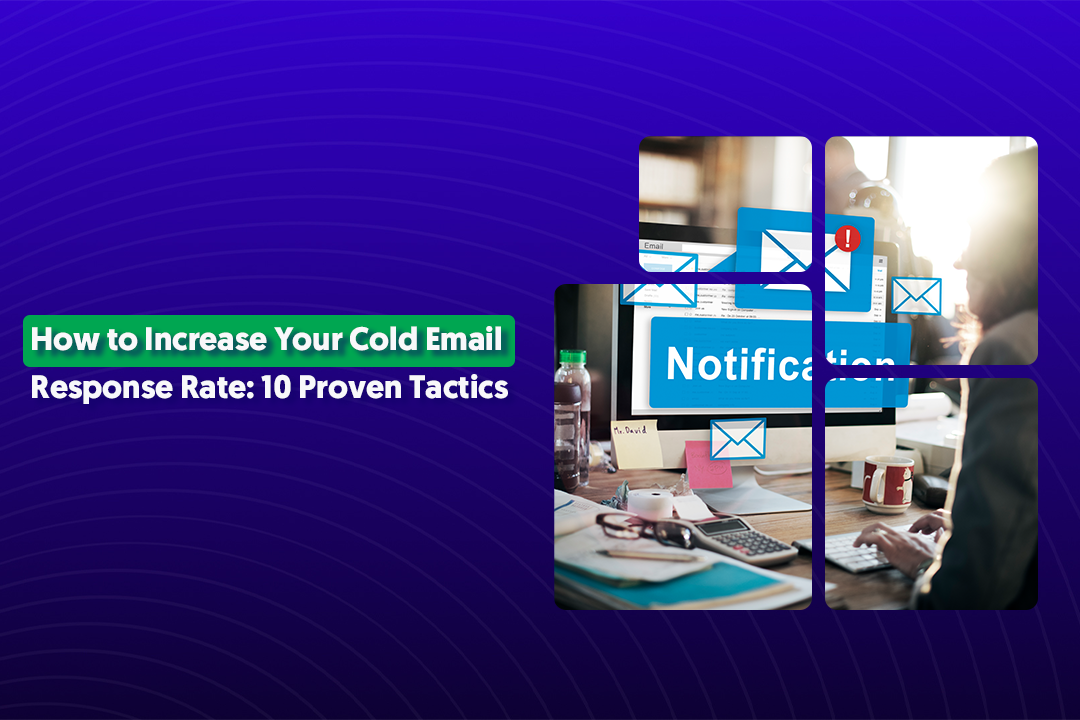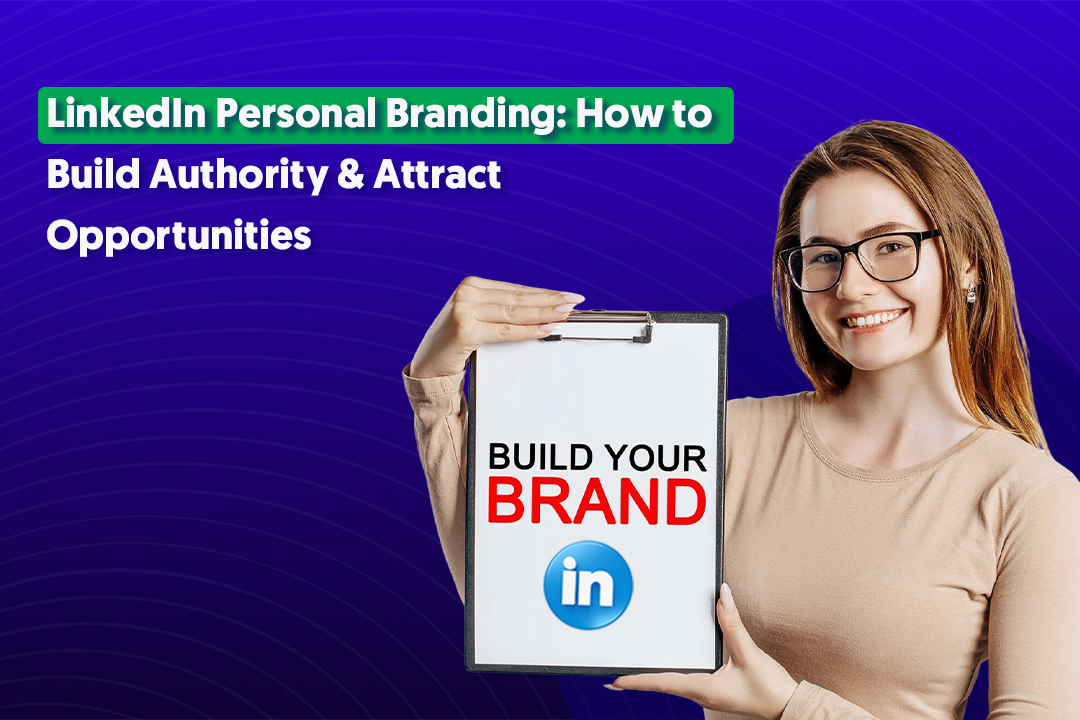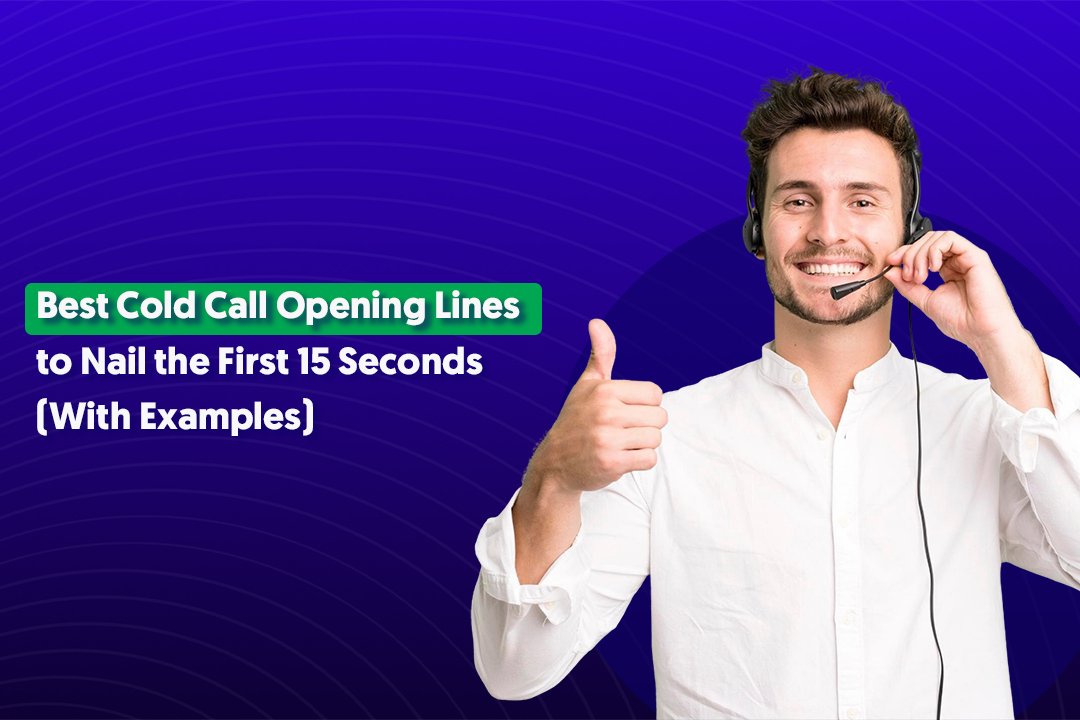Table of Content
Key Takeaways
- Optimize your profile to attract and convert high-quality leads
- Publish valuable content consistently to build trust and visibility
- Personalize connection requests, no more spammy pitches
- Use conversation-first messaging that gets real replies
- Engage in LinkedIn Groups and Events to build authority and connect authentically
- Automate with strategy using Cleverly’s proven tools and campaigns
If you're in the B2B space, LinkedIn isn't just another social platform, it's the place where deals start and relationships grow.
As we move through 2025, LinkedIn continues to dominate as the premier platform for professional networking and lead generation, and it’s only getting better at it.
Recent data shows that LinkedIn generates 3x more conversions than Twitter and Facebook combined when it comes to B2B lead gen. And according to a HubSpot report, LinkedIn is 277% more effective for lead generation than other social media networks.
That’s not a stat to ignore.
So, what’s changed in 2025?
For starters, LinkedIn’s algorithm is smarter. It now favors high-quality conversations and personalized outreach — not spammy cold messages.
The rise of AI-driven insights, advanced targeting features, and integrated CRM capabilities means it’s easier (and faster) than ever to connect with the right people.
Plus, with new features like AI-assisted profile optimization, interactive post formats, and better lead tracking tools, LinkedIn is turning into a full-scale sales enablement platform — not just a networking site.
If you're not tapping into LinkedIn’s full potential for your business development strategy in 2025, you're leaving money on the table.
In this guide, we’ll break down the most effective LinkedIn lead generation best practices for this year — from profile optimization and content strategy to outreach sequences and automation tools.
Best Practices for LinkedIn Lead Generation
Cracking the LinkedIn code in 2025 isn’t about pushing salesy messages or mass-adding connections.
It’s about strategy, personalization, and positioning yourself as a trusted expert in your niche.
Below, we’ll walk through proven best practices to help you generate high-quality B2B leads, nurture meaningful relationships, and ultimately drive real business results, without burning out or sounding like a bot.
Optimizing Your LinkedIn Profile to Attract High-Quality Leads
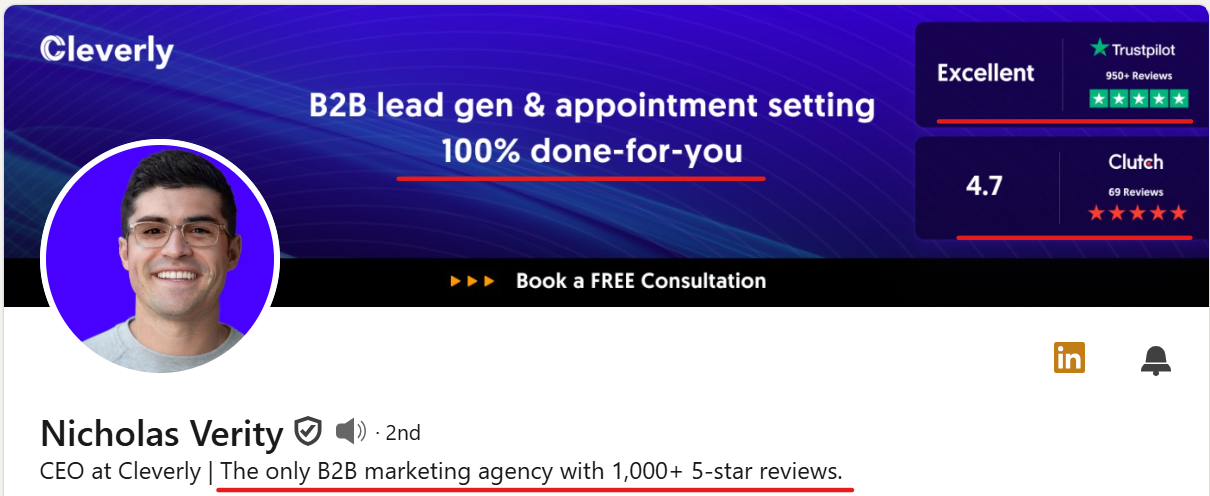
Your LinkedIn profile is your landing page, your pitch deck, and your first impression all rolled into one.
In 2025, high-performing LinkedIn profiles do three things really well:
- Establish trust instantly,
- Speak directly to your ideal clients, and
- Guide them toward taking the next step (like connecting or messaging you).
Here’s how to get yours in shape:
- Headline that Sells: Swap the generic job title for a value-driven headline.
Think: “Helping SaaS Companies Scale with Strategic Demand Gen | B2B Lead Generation Expert.” Speak directly to the problem you solve. - Banner Image with Purpose: Use your banner to reinforce your brand message or showcase a call-to-action.
A clean graphic that says “Book a Free Strategy Call” can drive clicks. - About Section that Connects: This is your elevator pitch — but written like a conversation.
Address your audience’s pain points, how you help, and include a subtle CTA at the end (like linking to a calendar or mentioning a free resource). - Featured Section = Lead Magnet: Use this space to showcase case studies, whitepapers, or client testimonials — anything that builds credibility and pulls prospects down the funnel.
- Profile Picture & URL: A professional headshot goes a long way.
Also, customize your URL to reflect your name or brand — it’s cleaner and easier to share.
Remember, your profile should speak to your ideal clients — not just about you. If it’s done right, you’ll start attracting leads organically, even before you send a single message.
Content Strategy: What’s Working for LinkedIn Lead Generation in 2025
If your LinkedIn profile is the storefront, then your content is the foot traffic pulling people in.
In 2025, LinkedIn’s algorithm heavily rewards relevance, consistency, and engagement. That means if you’re showing up with valuable insights tailored to your niche — and sparking real conversation — you’re going to get seen.
And not just by anyone, but by the right LinkedIn prospects.
Here’s what’s working now:
🔥 Top-Performing Content Formats
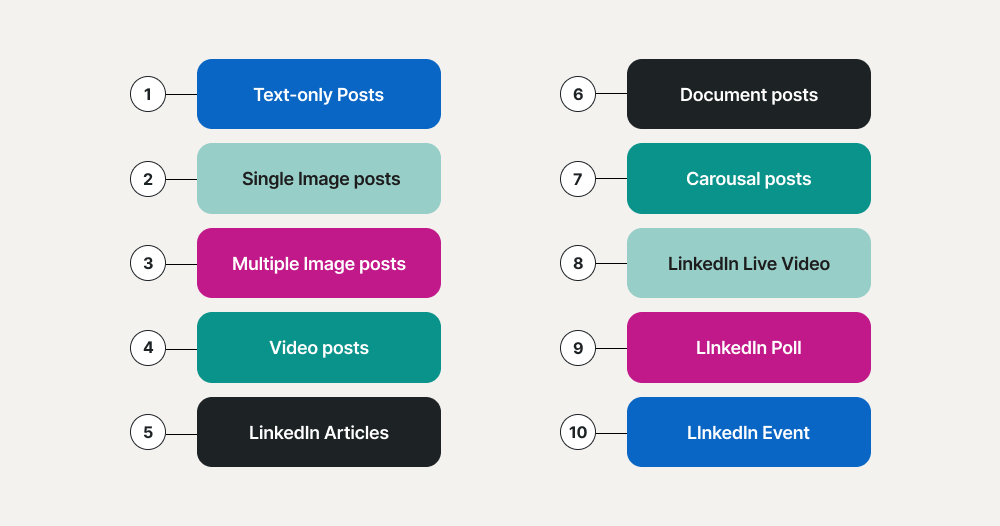
- Carousel posts with actionable insights (think: “5 Mistakes B2B Founders Make with Lead Gen”)
- Short-form videos (30–90 seconds) with captions — perfect for quick thought leadership or sharing wins
- Personal story + lesson combo posts — human, authentic, and great for engagement
- Polls with strategic intent — gather insights and boost visibility
- Native documents (PDFs) offering value, like checklists or mini playbooks
LinkedIn is increasingly favoring visual-first and save-worthy content, so think beyond plain text.
🗓️ Posting Frequency & Timing
- 3–5 times per week is the sweet spot for visibility without burnout.
- Best times to post in 2025? Still weekday mornings — between 9 AM to 11 AM (your target audience's local time).
- Bonus tip: Engaging with others’ posts 30 minutes before and after you publish can give your content an algorithmic boost.
🎯 Topic Selection That Attracts Leads
Your content should address three things:
- Your audience’s daily challenges
- What they wish they knew about solving those challenges
- How working with someone like you (or Cleverly 😉) changes the game
Use frameworks like:
- “Here’s what no one tells you about [common pain point]...”
- “If you're [target persona], here's a smarter way to [solve a key problem]...”
- Client stories/case studies, anonymized and value-packed
💬 Engagement Hacks to Expand Your Reach
- End posts with a conversation-starter question (“What’s working for you right now?”)
- Tag relevant connections or creators (without spamming)
- Respond to every meaningful comment — this keeps your post alive longer
- Slide into DMs with a “thank you” when someone engages consistently — that’s a warm lead opportunity
When done right, your content becomes a trust-building engine, drawing in leads who are already pre-sold on your expertise before they even talk to you.
Connection Strategy: How to Grow Your Network Without Annoying People
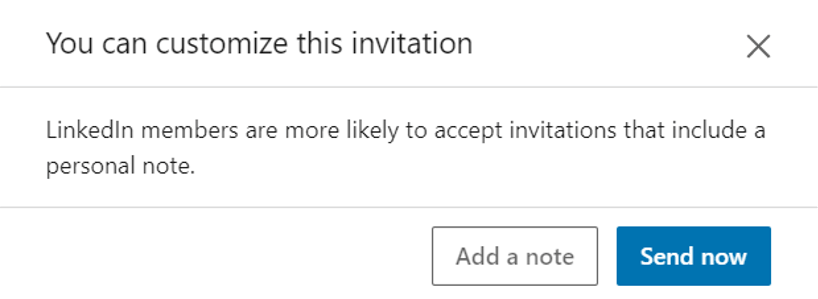
Let’s be honest — no one likes a random connection request followed by an instant sales pitch. In 2025, that tactic isn’t just ineffective, it’s a fast track to getting ignored or even reported.
A modern LinkedIn connection strategy is about relevance, personalization, and timing. It’s less “spray and pray,” more “connect with intent.”
Here’s how to grow your network the right way — without being that person:
👥 Target the Right People First
Use LinkedIn’s advanced search filters to narrow down your ideal prospects by:
- Industry
- Seniority level
- Company size
- Geography
- Keywords in headline or about section
And if you’re using Sales Navigator, take advantage of filters like "posted in last 30 days" or "changed jobs in last 90 days" to find active and open-minded leads.
✍️ Personalize Every Connection Request
You’ve got 200 characters in a connection note. Use them wisely.
❌ Instead of: “Hi, I’d like to connect.”
✅ Try: “Hi Sarah, I saw your post on B2B growth strategies, really resonated. Would love to connect and learn more about your approach.”
No pitch. No push. Just a genuine point of connection.
🔄 Engage Before You Connect
One underrated tactic? Warm up the relationship before you send the invite. Like and comment on your prospect’s content for a week or two. When your name starts to feel familiar, your connection request is far more likely to be accepted — and appreciated.
📈 Consistency Over Volume
Aim to send 10–20 quality connection requests per day, not 100+ copy-paste messages. LinkedIn’s algorithm prefers organic growth and will throttle your reach if you appear spammy.
Use tags or notes to track who’s accepted, who’s engaged, and who might be ready for a deeper conversation.
A thoughtful connection strategy doesn’t just grow your numbers — it builds a qualified, engaged audience that actually wants to hear from you.
And that’s the foundation of any successful lead generation system
Outreach Messaging That Actually Gets Replies
LinkedIn inboxes are flooded these days. And the quickest way to get ghosted in 2025? Sending a cold pitch that feels like it was copied from a template circa 2018.
Today, successful outreach is all about being human, relevant, and value-driven. If you want your LinkedIn messages to get replies — not eye-rolls — here’s what works:
💡 Start Conversations, Not Sales Pitches
The goal of your first message isn’t to sell — it’s to start a conversation. Focus on curiosity, relevance, or a mutual interest.
❌ Instead of: “We help businesses like yours grow revenue by 30%. Let’s hop on a quick call.”
✅ Try: “Hey Alex, noticed you’re leading growth at [Company] — curious how you’re approaching lead gen this year. Have you seen what’s working well on LinkedIn lately?”
This opens the door without pressure.
✍️ Personalization Is Non-Negotiable
Even if you’re using LinkedIn automation tools (and let’s be honest — most of us are), every message should feel like it was written just for that person.
Quick personalization starters:
- Mention a recent post they shared
- Reference mutual connections or groups
- Compliment something specific about their company, role, or achievements
🔁 Use a Proven Message Sequence (Not Just One Ping)
A single message often gets overlooked — and that’s okay. What matters is how you follow up. A soft, value-based sequence might look like this:
- Connection note: Brief, no pitch
- Welcome message: Casual, friendly
- Value drop: Share a relevant article, case study, or resource
- Conversation nudge: Ask a low-pressure question or invite feedback
- CTA (optional): “Would it make sense to explore how this could work for you?”
The key is to offer value before asking for time.
📉 Avoid These Outreach Killers
- Long, multi-paragraph DMs
- Overused buzzwords (“10x your pipeline,” “disrupt the market,” etc.)
- Asking for time too soon
- Making it all about you, not them
The best outreach feels like a natural conversation — not a pitch disguised as one.
When your messaging is dialed in, replies come easier, conversations flow naturally, and conversions happen more often.
Leveraging LinkedIn Groups and Communities for Lead Generation
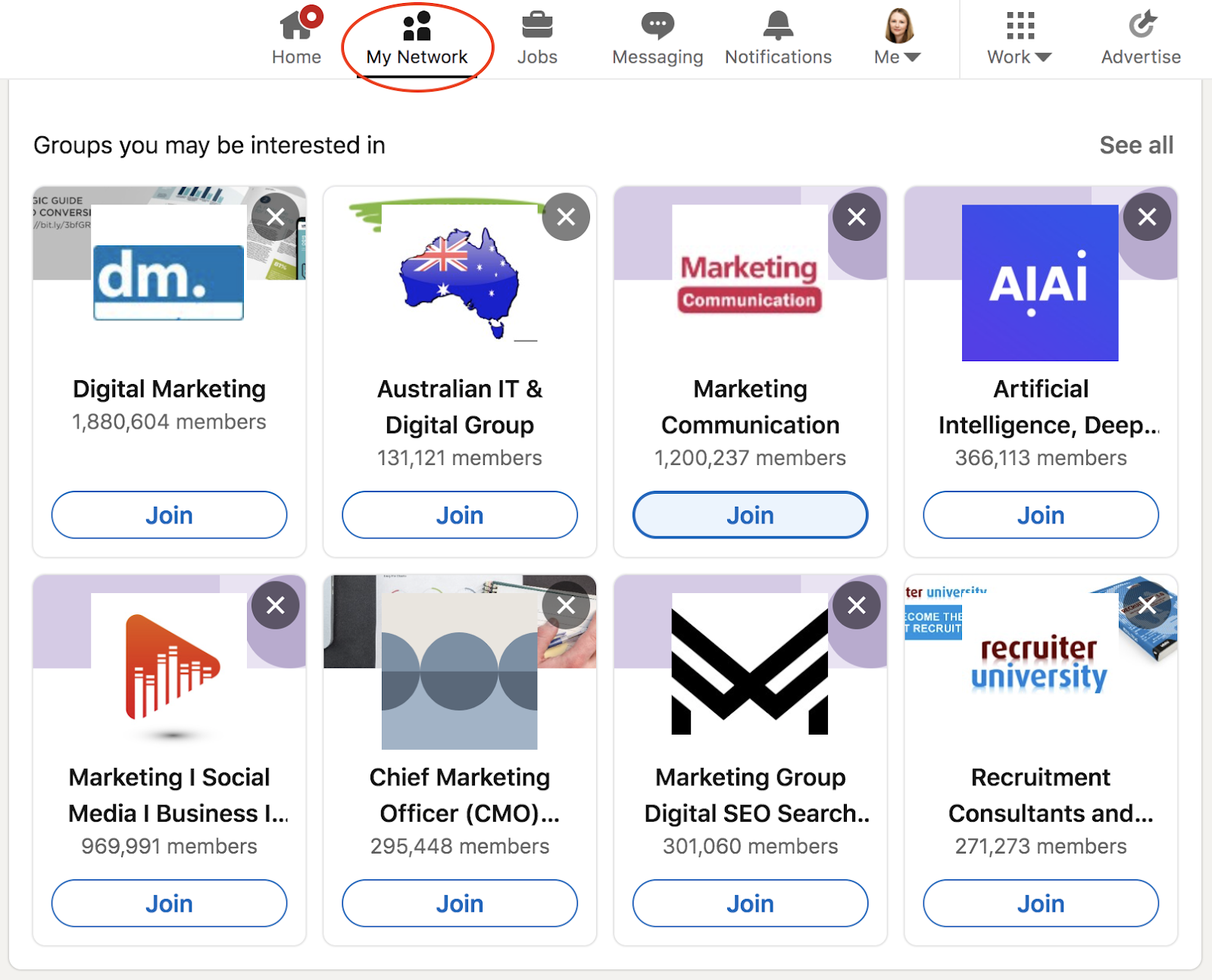
LinkedIn Groups have come a long way, and in 2025, they’re quietly becoming one of the most underutilized lead generation tools on the platform.
Why?
Because groups are filled with highly targeted, like-minded professionals who are already engaged in conversations related to your niche. It’s not about blasting your offer — it’s about being visible where your ideal clients are already paying attention.
Here’s how to tap into LinkedIn communities the right way:
🔍 Join the Right Groups (Quality Over Quantity)
Don’t just join a bunch of random groups. Look for communities where:
- Your ideal clients are actively posting or commenting
- Discussions are recent and not spammed with self-promo
- You can offer value based on your expertise
Pro tip: Use keywords like “B2B SaaS,” “Marketing Leaders,” “Startup Founders,” or specific industry verticals to find hyper-relevant groups.
💬 Engage Authentically — Don’t Just Lurk
Once you're in, don’t just sit on the sidelines. Participate. Comment thoughtfully on posts. Ask questions. Share insights. Your goal is to build trust and establish credibility, not immediately pitch anything.
A good rule of thumb?
Give 80% value, 20% promotion — and even then, only when it's relevant.
📢 Share Content Strategically
Many groups allow content sharing, but it needs to be:
- Contextual (related to ongoing discussions)
- Non-spammy (avoid direct CTAs like “book a call”)
- Genuinely useful (think checklists, how-to guides, quick wins)
When done right, this positions you as a go-to resource. People will check your profile (remember, it’s already optimized), and that’s when inbound leads start to roll in.
🧠 Start Your Own Community (Advanced Move)
If you're ready to play the long game, consider creating your own LinkedIn group around a niche topic. It takes effort, but it gives you full control over the conversation and helps build a community around your brand.
You become the host, not the guest, and that kind of authority can translate directly into qualified leads over time.
Using LinkedIn Events and Webinars to Bring in Leads
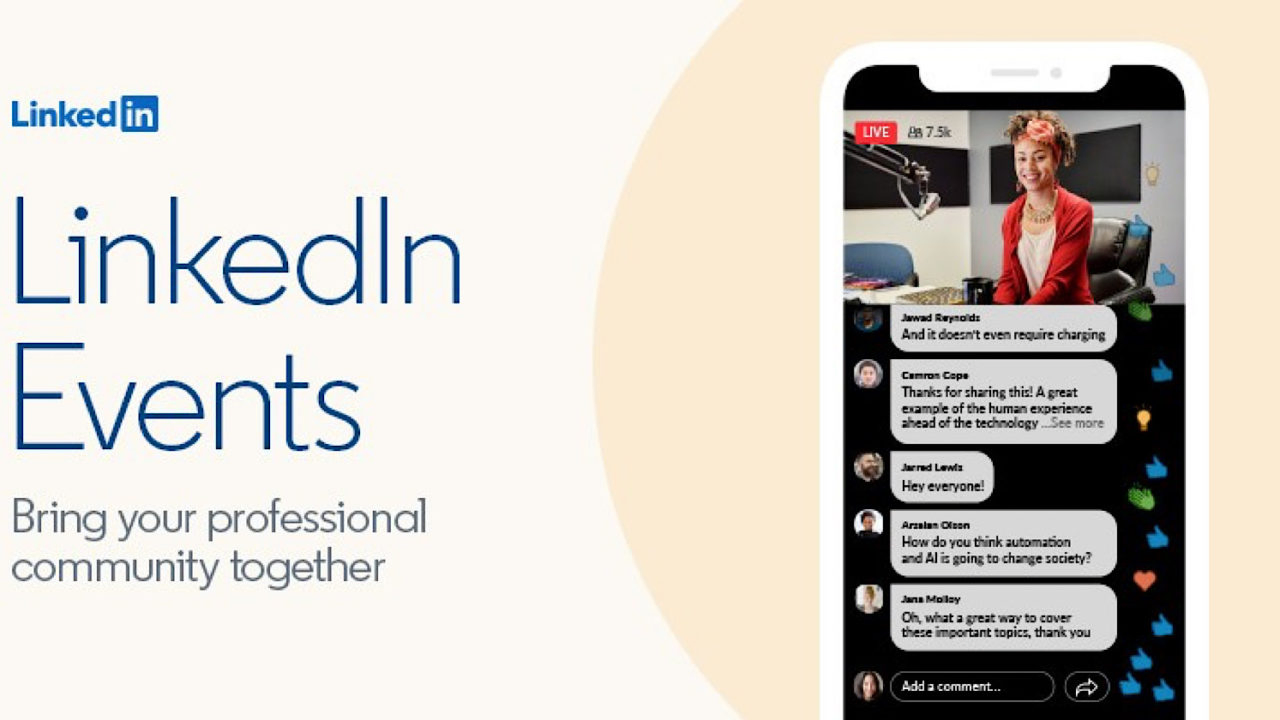
If you’re not using LinkedIn Events in 2025, you’re missing out on one of the most powerful lead generation features the platform has to offer.
LinkedIn has transformed its Events feature into a full-scale marketing and engagement tool, making it easier than ever to host webinars, panel discussions, or live Q&As — all right where your audience already is.
Here’s how to make it work:
📅 Create Events That Solve Real Problems
Choose topics your audience actually cares about — based on their pain points, questions, or trending topics in your niche.
Examples:
- “How B2B Startups Can 3x Their LinkedIn Pipeline in 2025”
- “LinkedIn Lead Gen Mistakes That Are Costing You Clients”
- “Live Audit: We’ll Fix Your LinkedIn Profile in 10 Minutes”
Make it clear what attendees will walk away with — and make it valuable enough that they want to attend (and invite others).
🧲 Use the Event Page as a Lead Magnet
Your event page can:
- Show social proof (via RSVPs and engagement)
- Drive organic reach (LinkedIn notifies connections when someone RSVPs)
- Collect warm leads (everyone who registers = a potential prospect)
Pro tip: Export your RSVPs, connect with attendees after the event, and follow up with a thank-you message + value (like a recording or bonus resource).
📣 Promote Like a Pro
Don’t just create the event and hope for the best. Promote it with:
- Carousel posts announcing the event
- Short teaser videos from speakers or hosts
- Personal DMs to warm connections (“Thought you might find this session valuable — no pressure to attend, just sharing!”)
You can even run targeted LinkedIn ads for high-impact reach if you’ve got budget behind your campaign.
🤝 Turn Attendees Into Leads
The gold is in the follow-up. After the event, engage with attendees by:
- Sending a recap or bonus takeaway
- Asking for their biggest insight or question
- Offering a free strategy session or consultation (light CTA)
This creates a natural sales conversation without being pushy — and it builds serious trust because they’ve already experienced your expertise firsthand.
LinkedIn Events let you educate, engage, and convert — all within the same ecosystem.
When paired with the right follow-up, they become one of the most efficient tools for warming up cold leads and turning visibility into conversations.
Scale and Automate Smartly Without Losing the Human Touch
Generating leads on LinkedIn manually can work, but it’s time-consuming. And if you're trying to scale, you’ll quickly hit a ceiling.
But here’s the good news: automation doesn’t have to feel robotic.
In 2025, the key is smart automation — using the right tools and proven strategies to scale your outreach without sacrificing authenticity. And that’s exactly where Cleverly comes in.

🤖 Smarter Automation, Real Conversations
At Cleverly, we’ve developed a proprietary LinkedIn automation tool that blends data, personalization, and timing to help you:
- Connect with your ideal prospects
- Send tailored messages that actually get replies
- Nurture conversations that turn into real pipeline opportunities
All while keeping your brand voice human and your approach professional.
📊 Proven Results from 10,000+ Clients
We’re not just another outreach tool — we’re a full-service LinkedIn lead generation partner. And the numbers speak for themselves:
- We’ve helped clients connect with companies like Amazon, Google, Uber, PayPal, Slack, and Spotify
- That’s resulted in $312M in pipeline revenue and $51.2M in closed deals — all directly from LinkedIn outreach

🧠 Human-Like Messaging, Powered by AI & Strategy
Our system customizes your outreach based on:
- Industry-specific messaging proven to convert
- A/B tested templates optimized across thousands of campaigns
- Ongoing performance data to refine and improve over time
The result?
You stay focused on closing deals, we handle the heavy lifting of getting the conversation started.
💼 Want to Generate Qualified B2B Leads on LinkedIn?
If you're serious about turning LinkedIn into a predictable source of pipeline, Cleverly can help you get there — faster and smarter.
Conclusion: LinkedIn Lead Generation in 2025
LinkedIn continues to be the top-performing platform for B2B lead generation — but the game has changed. In 2025, it’s not about cold pitches or mass messaging. It’s about authenticity, value, and strategy at scale.
By following these best practices — and leveraging tools like Cleverly’s proven lead gen system — you can turn your LinkedIn presence into a pipeline-building machine.
Frequently Asked Questions
1. Is LinkedIn still effective for B2B lead generation in 2025?
Absolutely. It remains the top platform for B2B outreach, with unmatched targeting and professional engagement.
2. How many times should I post on LinkedIn per week?
Aim for 3–5 times per week with a mix of value-driven and conversation-starting content.
3. What’s the best way to start outreach without sounding salesy?
Lead with curiosity, value, or a shared interest — not a pitch. Start a conversation, not a transaction.
4. Can LinkedIn outreach be automated without being spammy?
Yes. With tools like Cleverly, you can automate smartly using personalized, human-first messaging that gets results.
5. How long does it take to see results from LinkedIn lead generation?
Many see traction within a few weeks, but consistent effort (or partnering with a service like Cleverly) delivers the best long-term ROI.
6. What makes Cleverly different from other LinkedIn services and tools?
Cleverly combines automation with real human strategy, proven templates, and data from 10,000+ campaigns — helping you scale without losing the human touch.



